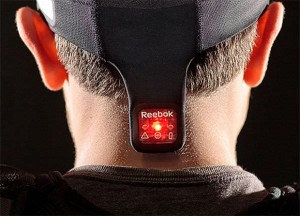The University of Pittsburgh tells us that there are nearly 300,000 sports-related concussions per year. These concussions are serious by themselves, however, if not properly cared for, they will only get worse. This is an epidemic among American athletes. An epidemic that should be taken seriously and knowledgeably. Parents, team members, and coaches alike need to not only know about head injuries but know how to spot them. A new item known as head impact sensors are in trial to help parents, team members, and coaches detect possible head injuries and prevent them from becoming more severe.
Head Impact Sensors
Head impact sensors are small sensors that are placed on the back of a helmet or on headbands (for those sports that don’t require helmets). These sensors have lights that turn yellow or red after an impact to the head. The lights help to determine the severity of the hit. Yellow means a moderate risk to the head and red means a high risk to the head.
However, these head impact sensors are not quite ready to trusted as a sole way of detecting head injury. There are still more tests that need to be run and a few kinks that need to be worked out before this is a possibility. However, studies show that head impact sensors will alert you if the head has been hit too hard. Where people need to be careful, is head injuries may still occur even if the light does not go off. Coaches are currently using this new technology to alert them if they do not notice a player has been hit too hard. It also helps team mates watch out for their team’s safety. In one study team mates came up with signals after each play to ensure that their light was not on before moving on to the next play.
The purpose of head impact sensors are to alert those around the athlete that there could possibly be something wrong. They are not made for diagnosing a problem and should not be used that way. They are intended to make the coaches and parents think about the safety of the athlete. Coaches should take the player out of the game once they see a yellow or red light and assess if they should continue to let the athlete play or not. Once again, the head impact sensors should not be used as a diagnosis or should not be used as the sole reason to take a player out of the game. Coaches and parents should also look for other signs of concussions or head injury such as: confusion, forgetfulness, loss of consciousness, behavior or personality changes, appearance of dizziness or “fogginess,” and they should definitely listen to complaints from the players about headaches, nausea, dizziness, double vision, or light sensitivity. All of these signs could indicate some degree of head injury. With careful observation and the added help of head impact sensors, we can limit the number of serious head injuries that occur while playing sports.
If you suspect head injury in your athlete, visit Care Club to see a doctor today!


